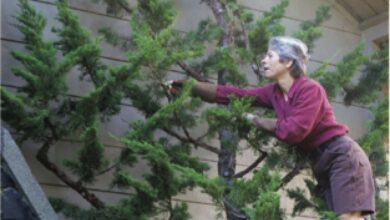Applegate Lake
Close enough for an easy day trip, but feeling remote enough for a weekend away, Applegate Lake has an away-from-it all appeal. This is a no-wake reservoir, so leave the speedboats at home, and watch the Osprey and Bald Eagles hunt the abundant fish in this wilderness lake.
The earthen and concrete dam was built in 1978 by the Corps of Engineers. It spans across the Applegate River 15 miles upstream of the town of Ruch, creating the lake, but flooding the town formerly known as Copper. Under the waters of the lake, the town of Copper used to hold the graves of Lindsay Applegate, an early explorer for whom this valley was named. Many claim heritage from this early prominent family, whose descendants’ ranches were flooded by the creation of the lake.
The lake itself is accessible to boats through four ramps: one at French Gulch, just after you cross the dam, at Copper boat ramp, about 2 miles above the dam on the main road, Hart-Tish park (for a fee) and at Seattle Bar, at the very upstream end of the lake. Canoe around to one of the many inlets, or putter slowly up and down the lake, but enjoy the quiet. In many inlets, there are log and Christmas tree flotillas, built for fish habitat enhancement, very appealing to fish, who shelter from the avian hunters under these tangles.
Hart-Tish Park fee area has a boat ramp, a more private lake access, with amenities such as RV parking, toilets, a concession stand, lawns and playground.
Around the lake are many trailheads and hikes that vary from easy strolls to serious wilderness hikes. Cross the dam, and park at the French Gulch picnic area to access an easy stroll that meanders along the East side of the lake, or park at the dam and follow the trail along the lake shore as far as you like for beautiful views without much hill-climbing. For a moderately strenuous hike, park just off the road across from the entrance of Hart-Tish Park entrance, and follow the signed trailhead for the Collings Mountain trail. Less than a mile up the trail, view the Bigfoot trap, but don’t get caught! This trail gains 1800 feet of elevation and loops around the mountain for 7 miles. The back side of the mountain yields a view of Carberry Creek, then the trail winds around the mountain back down to the road at Copper Boat ramp and campground, and follow the road back to your car.
The most remarkable feature around Applegate Lake is the Madrone tree. The Spanish explorers gave it this name in homage to the motherly nature of the tree. The evergreen broad leathery leaves are sweet, and are a favored winter browse for deer, the honey scented flowers are rich in nectar for bees, and the abundant, brick-red berries in the fall feed foxes, coyotes, squirrels and bears with their sweet-tart fruit which hangs on the tree until dry, then can be foraged by these animals throughout the early winter. The great appeal of the tree is the bark – smooth, touchable, velvety copper colored skin, and in the first really hot days of summer abruptly curls up and sheds to reveal new, jade-green bark underneath. This quickly turns back to the lovely, characteristic coppery color for another year.
Directions: From Ashland, take I-5 north to the Phoenix exit. Turn left on Fern Valley Road for half a mile, then turn right on OR-99. Drive 1 – ½ miles, then turn left on South Stage Road, towards Jacksonville. Take South Stage Road, follow the signs to Jacksonville for 8.8 miles through a right-and-left jog in the road where you will enter the town of Jacksonville, and join Highway 238 at California Street. Continue on OR-238 for 9 miles then turn left on Applegate Road. Continue 16 miles on Applegate Road/Upper Applegate road until you see the dam rising to meet the road on your left.
The dam is at 1,949 feet of elevation, getting only occasional snow in the winter. The ridge of the Red Buttes Wilderness is visible from the road along the lake, rises to over 6,000 feet, and retains snow into the early summer.
The upper tributary of the lake, Elliot Creek, is in California.
Locals will know that it is easy to get turned around here because ‘upstream’ in the valley is heading south, which is ‘down’ on a map.




